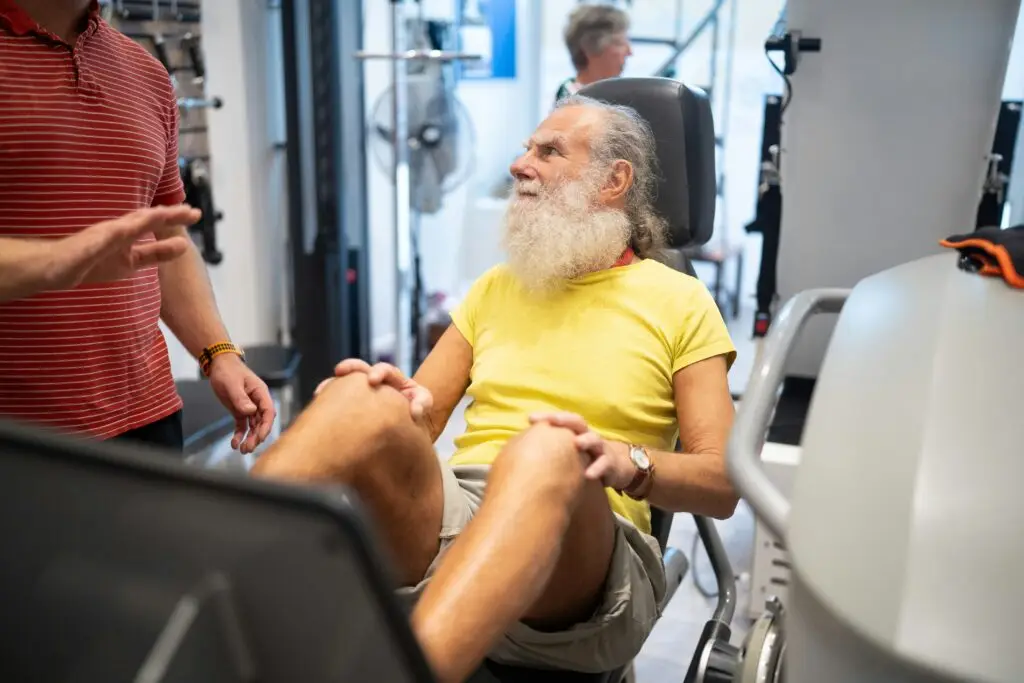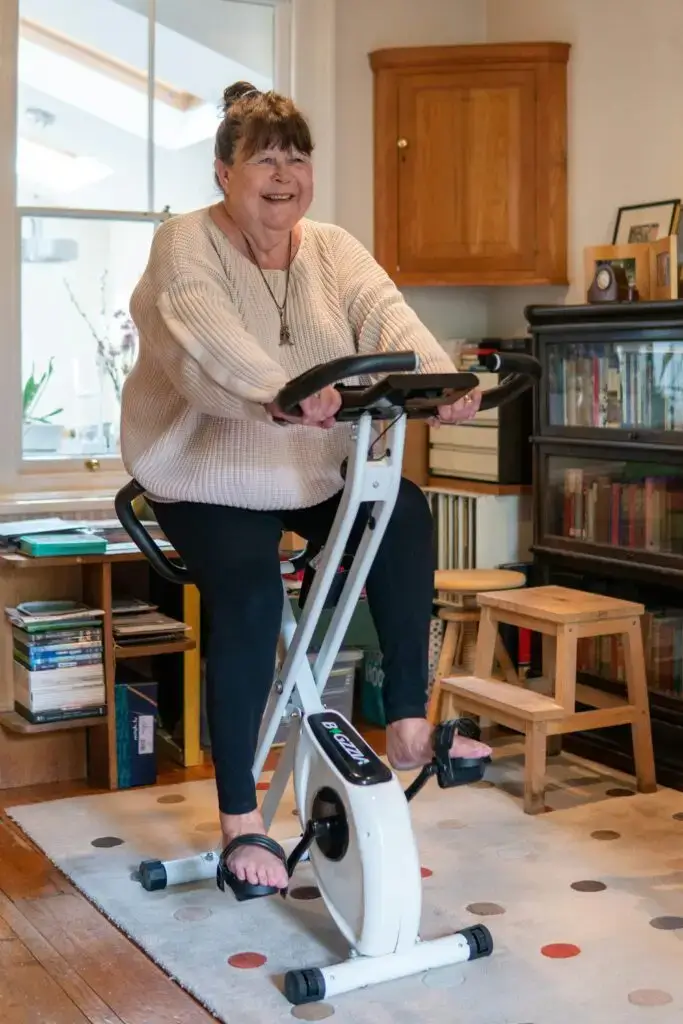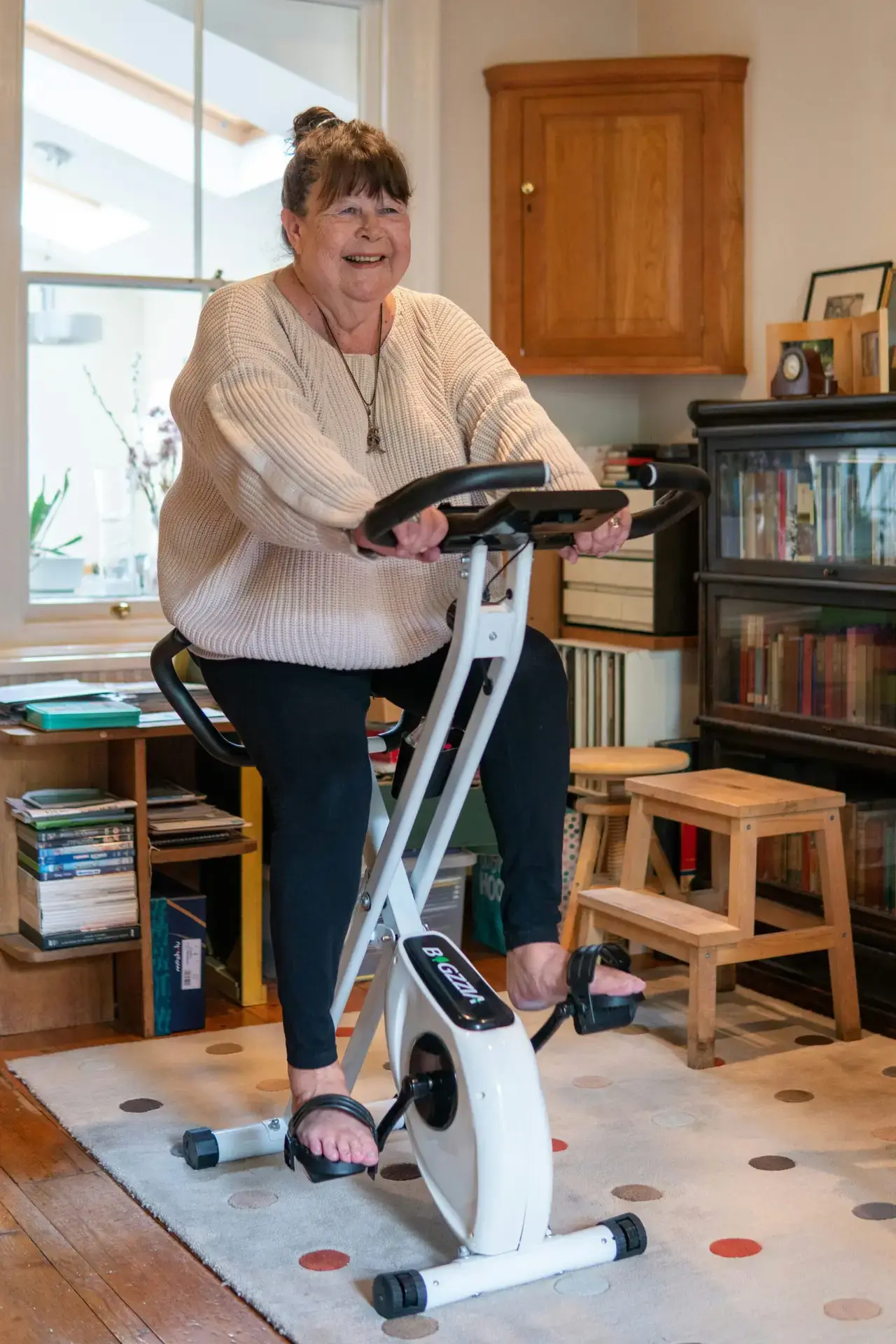Written by Will Duru, BSc (Hons) Sport and Exercise Science, Level 3 Personal Trainer
we age, maintaining strength is about more than just muscle tone – it’s about preserving health, independence, and quality of life. In fact, many experts consider strength training a form of anti-ageing fitness because of its profound long-term health benefits. Incorporating resistance exercises into your routine can improve bone density, metabolic health, balance, and even cognitive function, helping you stay active and self-reliant well into your golden years. This article examines why strength training for longevity is so practical and offers actionable advice on incorporating these healthy ageing workouts into your life for a healthier, more active future.

The Long-Term Health Benefits of Strength Training
Regular strength training yields wide-ranging benefits that directly combat the effects of ageing. Unlike exercise fads that focus solely on aesthetics, resistance training targets the core aspects of health that help you age more effectively. Here are some key long-term benefits:
- Preserving Muscle Mass and Strength: Adults naturally lose muscle mass with age (a process known as sarcopenia), which can lead to frailty. Strength training helps preserve existing muscle and even stimulate new muscle growth at any age. Research shows that it’s never too late to start – even people over 70 can build muscle and strength through resistance workouts. By maintaining muscle, you support your metabolism and keep your body functional. In fact, greater muscle strength is strongly linked to lower all-cause mortality, meaning that people who maintain stronger muscles tend to live longer, healthier lives. Building strength now creates a reserve that helps you stay active and independent as you get older.
- Stronger Bones and Joint Health: Bone density tends to decrease with age, especially in women, raising the risk of osteoporosis and fractures. The good news is that strength training places healthy stress on your bones, which signals your body to build and fortify bone tissue. Over time, this increases bone density and helps prevent age-related bone loss. Stronger muscles also support and protect your joints, reducing strain on knees, hips, and shoulders. Studies have found that resistance exercises can alleviate symptoms of arthritis and even reduce pain by strengthening the muscles around affected joints. In short, regular strength work keeps your skeletal structure robust, lowering the risk of fractures and joint injuries as you age.
- Improved Metabolic Health and Weight Management: Ageing is often associated with a slowing of metabolism and gradual weight gain. Strength training can counteract this by increasing lean muscle mass, which in turn boosts your resting metabolism, allowing you to burn more calories even at rest. It becomes easier to manage your weight and avoid obesity, a key factor in healthy ageing. Resistance workouts also improve insulin sensitivity, which helps regulate blood sugar levels and can prevent or manage type 2 diabetes. In older adults, maintaining muscle through strength training is linked to better metabolic health markers (like blood glucose and cholesterol levels) and a lower risk of metabolic syndrome. Essentially, building muscle power helps keep your body’s “engine” running efficiently.
- Better Balance and Fall Prevention: One of the biggest threats to an older person’s independence is falling. Strength training significantly improves balance and coordination by strengthening the core and lower-body muscles that are responsible for stability. Exercises that target your legs, glutes, and core lead to improved steadiness in everyday movements. With stronger muscles supporting your body, you’ll be less likely to stumble or lose your footing. This reduces the risk of falls and the serious injuries that can come with them. In turn, better balance means you can stay active with confidence – whether it’s climbing stairs, walking on uneven ground, or playing with your grandchildren – without as much fear of falls.
- Cognitive Function and Mental Well-Being: Exciting research indicates that strength training benefits not just the body but also the brain. Regular resistance exercise has been associated with sharper thinking and a lower risk of cognitive decline in older adults. For example, studies suggest that combining strength training with aerobic exercise can enhance memory and learning skills, potentially delaying the progression of conditions such as mild cognitive impairment. Weight training sessions increase blood flow to the brain and release growth factors that support neural health. Additionally, strength workouts can boost your mood and energy levels. Many seniors report feeling more confident and less anxious or depressed when they train consistently, thanks to the endorphins and sense of accomplishment that exercise provides. In short, maintaining your muscle fitness may also help keep your mind sharp and spirits high as you age.
- Heart Health and Longevity: Strength training isn’t just about muscles – it benefits your heart and longevity, too. Engaging in resistance exercises has been linked to lower blood pressure and improved cholesterol profiles, which contribute to overall cardiovascular health. Even more compelling, extensive studies have found that older adults who engage in strength training two to three times a week significantly reduce their mortality risk. In one survey of 115,000 people over 65, those who combined at least two strength training sessions per week with regular aerobic activity had a 30% lower risk of death from all causes over an 8-year period. This suggests that incorporating weightlifting or resistance band exercises into your routine can literally help extend your life. Strength training, combined with a balanced lifestyle, is one of the most effective ways to promote healthy ageing and increase longevity.

How to Start Strength Training for Healthy Ageing
Getting started with strength training can feel intimidating, especially if you’re older or new to exercise. The key is to remember that it’s never too late, and you don’t have to be a bodybuilder to benefit. Strength training for longevity is all about consistency and proper progression, not heavy lifting or extreme workouts. Here are some tips to help you integrate strength training into your life safely and effectively:
Start Small and Progress Gradually: If you’re new to strength training, begin with light resistance and short sessions. You can even start with no weights at all – simple bodyweight exercises (like chair squats, wall push-ups, or calf raises) are highly effective for beginners. This allows your muscles, joints, and tendons to adapt to new movements. As you grow stronger and more comfortable with the exercises, gradually increase the challenge – for example, add a couple of pounds or an extra repetition to your sets. The goal is to improve incrementally. Even small gains in strength will translate into real-world benefits for your daily life. Remember, consistency is more important than intensity when you’re starting out.
Focus on Form and Functional Movements: Proper exercise technique is crucial for both preventing injury and maximising the benefits of each movement. Take time to learn the correct form for each exercise. If possible, work with a knowledgeable trainer or use a reputable fitness app for guidance on form. Emphasise functional movements that mimic everyday activities – for example, squats and step-ups strengthen your legs for climbing stairs or standing up from a chair, and shoulder presses help with lifting objects to a shelf. By focusing on these practical exercises, you build strength that directly improves your ability to perform daily tasks and maintain your independence. Don’t worry about lifting heavy barbells or “maxing out” – the priority is controlled, quality movement through a full range of motion.
Use Joint-Friendly Equipment: You don’t need an expensive gym membership to do strength training. Many older adults find resistance bands to be an excellent starting tool – they are low-impact on the joints while still providing sufficient resistance to build muscle. Light dumbbells or kettlebells are also great once you’re comfortable. Even common household items (like soup cans or water bottles) can serve as weights for arm exercises. If you prefer gym machines, they can guide your motion and provide stability, which is helpful if you have balance issues. The bottom line is to choose equipment that suits your current ability. If your muscles are working against resistance (be it gravity, bands, or weights), you will get stronger.
Include Balance and Core Exercises: Since balance tends to decline with age, it’s advisable to incorporate balance training into your routine. Simple additions, such as standing on one foot while holding onto a support or using a stability ball for certain exercises, can help improve your balance and core strength. Many classic strength exercises double as balance work – for instance, squats and lunges strengthen your legs and engage your core and stabilizer muscles. Yoga or Tai Chi moves can also complement your strength workouts by enhancing flexibility and body awareness. Improving your core strength and balance will amplify the fall-prevention benefits of your program. It can be as simple as doing a one-minute balance drill during commercial breaks or after your strength workout. Little challenges to your balance, done consistently, will help you stay steady on your feet.
Make It Enjoyable and Sustainable: The best workout plan is one you can stick with for the long haul. Find ways to make strength training a positive part of your week. You might enjoy joining a group class for seniors, working out with a friend, or using music to energise your sessions. Keep your workouts simple and time-efficient – even 12 reps of a few basic exercises can make a huge difference to your health if done regularly. You can also integrate strength moves into your daily routine: for example, do a set of wall push-ups after your morning walk, or practice getting up from a chair without using your hands. Celebrate your progress, no matter how small. Maybe today you can lift a 5-pound weight, whereas a month ago you could only lift 2 pounds – that’s a victory! By making the process enjoyable, you’ll create a habit that supports your long-term fitness goals rather than feeling like a chore.
Embracing strength training as part of your lifestyle is one of the most empowering steps you can take to age healthily and optimally. Over time, you’ll likely notice everyday tasks feeling easier – carrying groceries, climbing stairs, or playing with kids will require less effort as your functional strength improves. Perhaps most importantly, you are investing in your future independence. The muscle and bone strength you build now will pay dividends in later years by helping prevent falls, frailty, and chronic disease. Think of it as a gift to your future self.
If you’re ready to begin, start with small, achievable goals – for example, commit to two healthy ageing workouts per week, focusing on different muscle groups. Track your progress, and don’t hesitate to seek out resources that can help you stay on course. In fact, online tools like just12reps.com are specifically designed to support long-term fitness goals, offering personalised strength training plans and guidance to keep you motivated over time. By staying consistent and gradually challenging yourself, you’ll build a strong foundation that’ll serve you well for years to come.
Empathy and Encouragement: Remember, strength training for longevity is not about chasing perfection or comparing yourself to others – it’s about taking care of your body so you can live life to the fullest at every stage of life. Every rep, every set, is an investment in a healthier, more active future. Whether you are 35 or 75, the journey to improved strength and vitality starts with that first workout. So grab a weight (or even just your own body weight) and begin today – your future self will thank you for it!

Sources:
- Norton Healthcare – Why strength and resistance training can help you as you age (Feb 19, 2024) .
- Norton Healthcare – Tips for starting strength training as you age .
- Mayo Clinic – Strength training: Get stronger, leaner, healthier .
- Harvard Health – Strength training might lengthen life (Feb 1, 2023) .
- University of Sydney – Strength training can help protect the brain from degeneration .







